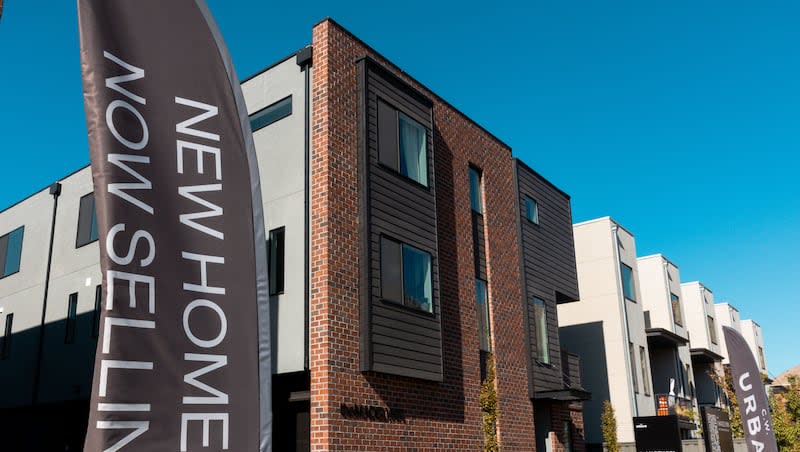There’s been a shift in real estate commissions, but will it drive affordability?

When the National Association of Realtors settled a $418 million payment earlier this month, it sparked hope that at least a fragment of costs would go down in the already unaffordable real estate world. Still, according to Toby Schifsky, vice president of real estate education, Kaplan told the Deseret News that sellers shouldn’t be holding their breath on that hope.
“The National Association of Realtors’ decision last week to radically change the way that commissions for buyer agents works is going to have a significant impact on the marketplace. Home prices may very well go down, but that does not necessarily mean that commissions will,” Schifsky said.
The recent settlement was the result of a legal dispute initiated by home sellers in Missouri. The agreement requires the influential National Association of Realtors to modify its compensation rules for bother sellers’ and buyers’ agents. The impact of the lawsuit changes the longstanding norm of sellers having to pay a commission — typically 6% of the sales price — that is divided between both agents.
“No longer will inattentive and unknowledgeable buyer agents, who may not be able to keep up with the fast changes in the market, receive the same size commission as their highly engaged, market-savvy competitors. These new buyer agents may actually command a much higher price than half of a 6% commission by demonstrating a higher service value to their buyer, including negotiating better terms and sale price on the home,” Schifsky added.
Housing shortage and unaffordability
According to the latest Redfin report, the average homebuyer in the United States must earn an annual income of nearly $114,000 to afford a typical home. The last time a typical buyer made more than enough income to afford such a home was February 2021.
“For over a decade, America has been slowly marching toward a housing affordability crisis due to chronic underbuilding, and that crisis was kicked into overdrive when the pandemic homebuying boom fueled a meteoric rise in housing prices,” Redfin Senior Economist Elijah de la Campa said, per the report.
As of December 2023, the U.S. was short nearly 3.2 million homes. That same month, the Deseret News reported that in Utah, there are merely three housing units available for every 100 households earning 30% or less of the state’s median income.
“Now there’s another culprit squeezing homebuyers: elevated mortgage rates. We’re slowly climbing our way out of an affordability hole, but we have a long way to go. Rates have come down from their peak, and are expected to fall again by the end of the year, which should make homebuying a little more affordable and incentivize buyers to come off the sidelines.”
According to Freddie Mac, the 30-year fixed mortgage rate for a house was 6.87% as of March 21, a .13 increase from the week prior and a .45-year change. As of February, the monthly mortgage payment for an existing home was $2,001, per Fox Business. This is a dramatic jump from January 2021, when the payment was $1,009, marking an increase of 98%.
Alexander Shaban, a research analyst at John Burns Research and Consulting, posted on X that “to keep up with annual demand, the US needs 1.86M new homes (for-sale and for-rent) per year through 2033, based on underlying demographics and current undersupply. We’re currently starting homes at a SAAR of 1.42 million homes, ~400K fewer than needed.”
To keep up with annual demand, the US needs 1.86M new homes (for-sale and for-rent) per year through 2033, based on underlying demographics and current undersupply.
We're currently starting homes at a SAAR of 1.42 million homes, ~400K fewer than needed. pic.twitter.com/RxgzJLKFiQ— Alex (@Shabanomics) March 25, 2024
Faced with limited housing inventory, homebuyers are turning to builders for additional options. The United States Census Bureau, in its monthly new residential construction report of February 2024, found increases in building permits, housing starts and completions across the U.S.
Since last year, builders have been accelerating their construction efforts and addressing affordability issues for buyers by offering sales incentives, such as lowering mortgage rates or helping with closing costs.
“The new-home market is becoming a dominant player, and we expect that to continue in 2024,” Ali Wolf, chief economist with housing research firm Zonda, said, per the National Association of Realtors.

